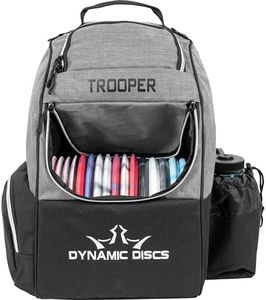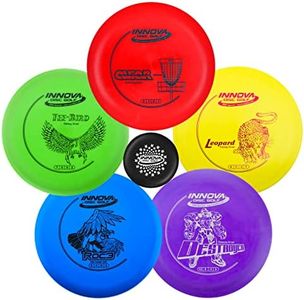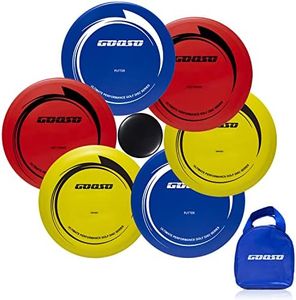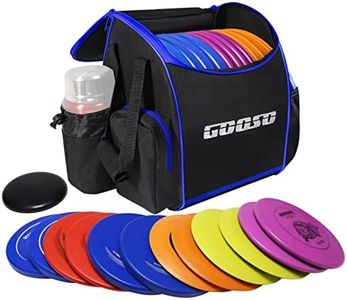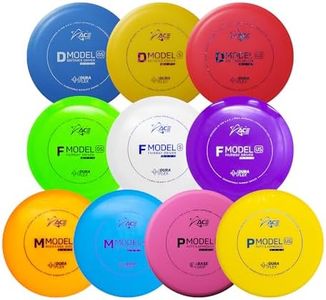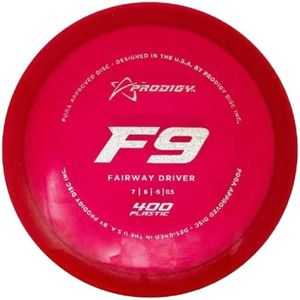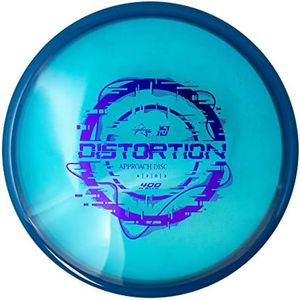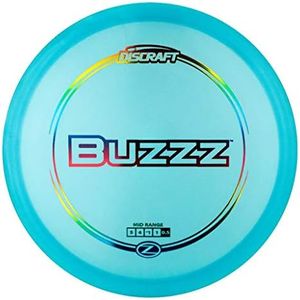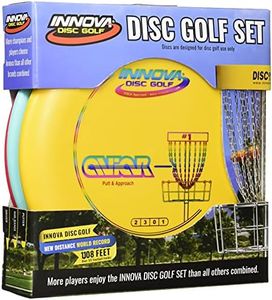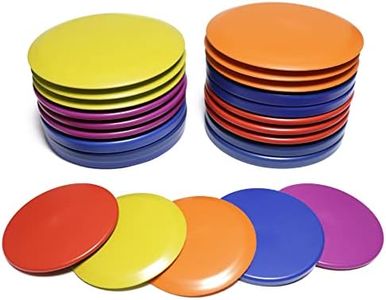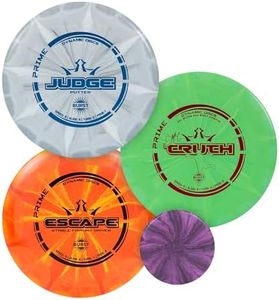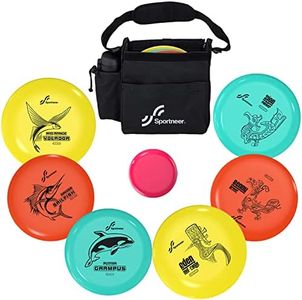We Use CookiesWe use cookies to enhance the security, performance,
functionality and for analytical and promotional activities. By continuing to browse this site you
are agreeing to our privacy policy
10 Best Disc Golf Discs 2025 in the United States
How do we rank products for you?
Our technology thoroughly searches through the online shopping world, reviewing hundreds of sites. We then process and analyze this information, updating in real-time to bring you the latest top-rated products. This way, you always get the best and most current options available.

Buying Guide for the Best Disc Golf Discs
Choosing the right disc golf disc can significantly impact your game. The key is to understand the different types of discs and their specifications, which will help you select the best fit for your playing style and skill level. Disc golf discs are generally categorized into drivers, mid-range discs, and putters, each serving a different purpose on the course. By understanding the key specifications, you can make an informed decision and improve your performance.Type of DiscDisc golf discs are categorized into three main types: drivers, mid-range discs, and putters. Drivers are designed for long-distance throws and have a sharp edge to cut through the air. Mid-range discs are more versatile and are used for a variety of shots, offering a balance between distance and control. Putters are used for short-range throws and putting into the basket, providing maximum control and accuracy. Your choice should depend on the type of throw you need to make and your skill level. Beginners often start with mid-range discs and putters to develop control before moving on to drivers.
WeightThe weight of a disc golf disc can affect its flight characteristics and how it feels in your hand. Discs typically range from 150 to 180 grams. Lighter discs (150-165 grams) are easier to throw and can achieve greater distance with less effort, making them suitable for beginners and players with less arm strength. Heavier discs (165-180 grams) offer more stability and control, which can be beneficial in windy conditions and for more experienced players. Choose a weight that matches your throwing strength and the conditions you usually play in.
Plastic TypeDisc golf discs are made from various types of plastic, each offering different levels of durability, grip, and performance. Basic plastics are more affordable and provide a good grip but may wear out faster. Premium plastics are more durable and maintain their flight characteristics longer but can be more expensive and sometimes less grippy. There are also ultra-premium plastics that offer the best of both worlds but come at a higher price. Consider how often you play and your preference for grip and durability when choosing the plastic type.
StabilityStability refers to how a disc flies in terms of its tendency to turn or fade during flight. Discs are categorized as understable, stable, or overstable. Understable discs tend to turn right (for right-handed backhand throws) and are easier to control for beginners. Stable discs fly straight with a slight fade at the end, offering a balance of control and distance. Overstable discs tend to fade left and are more predictable in windy conditions, making them suitable for advanced players. Your skill level and the typical wind conditions you play in should guide your choice of stability.
SpeedSpeed is a rating that indicates how fast a disc needs to be thrown to achieve its optimal flight. Speed ratings range from 1 to 14, with higher numbers indicating faster discs. Lower-speed discs (1-5) are easier to control and are ideal for beginners and short-range throws. Mid-speed discs (6-9) offer a balance of control and distance, suitable for intermediate players. High-speed discs (10-14) require more power and skill to throw accurately and are best for advanced players looking for maximum distance. Choose a speed rating that matches your throwing power and skill level.
Most Popular Categories Right Now
